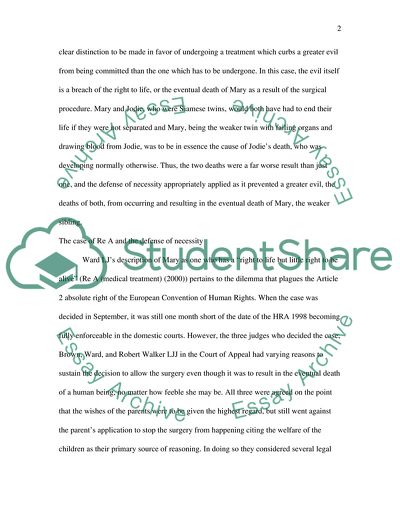Cite this document
(Discussion of Medical Treatment Cases in Light of Ward LJs Judgment Case Study - 1, n.d.)
Discussion of Medical Treatment Cases in Light of Ward LJs Judgment Case Study - 1. Retrieved from https://studentshare.org/medical-science/1749900-mary-has-a-right-to-life-but-little-right-to-be-alive-per-ward-lj-re-a-conjoined-twins-medical-treatment-2000
Discussion of Medical Treatment Cases in Light of Ward LJs Judgment Case Study - 1. Retrieved from https://studentshare.org/medical-science/1749900-mary-has-a-right-to-life-but-little-right-to-be-alive-per-ward-lj-re-a-conjoined-twins-medical-treatment-2000
(Discussion of Medical Treatment Cases in Light of Ward LJs Judgment Case Study - 1)
Discussion of Medical Treatment Cases in Light of Ward LJs Judgment Case Study - 1. https://studentshare.org/medical-science/1749900-mary-has-a-right-to-life-but-little-right-to-be-alive-per-ward-lj-re-a-conjoined-twins-medical-treatment-2000.
Discussion of Medical Treatment Cases in Light of Ward LJs Judgment Case Study - 1. https://studentshare.org/medical-science/1749900-mary-has-a-right-to-life-but-little-right-to-be-alive-per-ward-lj-re-a-conjoined-twins-medical-treatment-2000.
“Discussion of Medical Treatment Cases in Light of Ward LJs Judgment Case Study - 1”. https://studentshare.org/medical-science/1749900-mary-has-a-right-to-life-but-little-right-to-be-alive-per-ward-lj-re-a-conjoined-twins-medical-treatment-2000.


